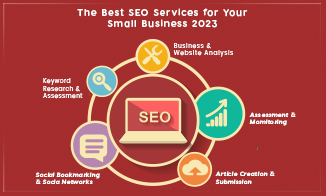
With the rise of mobile devices and the increasing popularity of online shopping, creating an e-commerce mobile app can be a game-changer for your business. However, building a successful mobile app can be a daunting task, especially if you’re new to the world of app development. But fear not! In this article, we’ll provide you with 10 easy steps to build a successful e-commerce mobile app that will help you reach your target audience and increase sales.
Key Takeaways
- Building a successful e-commerce mobile app requires careful planning and execution.
- Defining your app’s goals and target audience is crucial before starting development.
- Researching competitors and market trends can help you identify opportunities for differentiation.
- A user-friendly interface and robust functionality are key factors in ensuring customer satisfaction.
- Implementing a secure payment and checkout system is essential for earning customer trust.
- Optimizing app performance and speed can greatly enhance user experience.
- Launching and promoting your app effectively can help you reach your target audience and increase downloads.
Define Your App’s Goals and Target Audience
Before embarking on the journey of building a successful e-commerce mobile app, it’s important to define your app’s goals and target audience. This will help you tailor your app to meet the specific needs of your customers and maximize its chances of success.
To define your app’s goals, start by asking yourself a few key questions such as:
- What do I want my app to achieve?
- Who are my target customers?
- What problems does my app solve?
By answering these questions, you can identify the core objectives of your e-commerce mobile app and ensure that it meets the needs of your target audience.
When it comes to defining your target audience, consider factors such as age, location, interests, and purchasing habits. Conduct research to gain insights into your target audience and understand what they’re looking for in an e-commerce mobile app. This will help you tailor your app’s features and functionality to meet their specific needs and preferences.
By defining your app’s goals and target audience upfront, you can set a clear direction for your e-commerce mobile app and create a product that resonates with your customers from day one.
Research Competitors and Market Trends
Vibrant info Before diving into building your e-commerce mobile app, it’s essential to conduct thorough research on your competitors and stay up-to-date with the latest market trends. Knowing what your competitors are doing right and wrong can help you identify gaps in the market and differentiate your app.
Start by analyzing the top-performing e-commerce apps in your niche. Look at their user interface, features, product range, pricing strategy and customer reviews. Pay attention to their strengths and weaknesses and take note of what makes them stand out.
It’s also important to track market trends and adapt your app accordingly. Keep an eye on emerging technologies, evolving consumer behavior and changes in regulations that could affect your business. You can use this information to anticipate future challenges and stay one step ahead of the competition.
| Best Practices for Competitor Research |
| Analyze competitor apps: Understand the features they offer and review their strengths and weaknesses. |
| Identify opportunities for differentiation: Look for gaps in the market and areas where you can stand out. |
| Stay up-to-date with market trends: Stay informed about emerging technologies and changes in consumer behavior that could impact your business. |
By doing your homework on competitors and market trends, you can build a more effective e-commerce mobile app that will appeal to your target audience and stand out from the crowd.
Plan and Design User-Friendly Interface
One of the key factors in building a successful e-commerce mobile app is designing a user-friendly interface that simplifies the shopping experience for users. Not only does a well-designed interface enhance user engagement, but it also increases the likelihood of repeat visits and boosts customer loyalty.
To achieve this, it is vital to plan and design the app’s interface carefully. Navigation must be intuitive, enabling customers to easily browse products and categories. The design should be visually appealing while maintaining a consistent look and feel throughout the app. Additionally, the app should provide clear product displays and high-quality images to showcase products in their best light.
Another crucial aspect of designing a user-friendly interface is providing a seamless checkout process. Customers should be able to purchase products quickly and easily, with minimal clicks and form-filling. To achieve this, it’s recommended to include payment options such as credit/debit cards, PayPal, and digital wallets. Moreover, implementing a “guest checkout” option can attract new customers and reduce cart abandonment rates.
It’s worth noting that designing a user-friendly interface is an ongoing process. Regularly gathering feedback from customers can provide valuable insights into how to improve the design and functionality of the app. Implementing A/B testing, tracking user behavior, and analyzing data can provide valuable insights into the customer journey and make the app more effective.
Develop and Test Robust Functionality
Once you have defined your goals and target audience, researched competitors and market trends, and planned a user-friendly interface for your e-commerce mobile app, it’s time to start developing and testing the app’s robust functionality. This is a critical step in ensuring that your app meets the needs and expectations of your target audience, and that it delivers a seamless and enjoyable user experience.
First and foremost, you need to choose the right technology stack for your e-commerce mobile app. This includes selecting the appropriate programming languages, frameworks, libraries, and tools that will enable you to develop a high-quality app that performs well and is scalable.
Next, you need to integrate essential features that are critical to the success of your e-commerce mobile app. This includes features such as product catalogs, shopping carts, checkout processes, payment gateways, and customer support.
But it’s not enough to simply develop and integrate these features—you must also thoroughly test your app’s functionality to ensure that it works flawlessly and meets the needs of your target audience. This includes conducting comprehensive testing of all app components and features, including functional testing, usability testing, performance testing, and security testing.
In addition, it is important to continually optimize and improve the functionality of your e-commerce mobile app based on user feedback and changing market trends. This includes fixing bugs and issues, adding new features, and enhancing the overall user experience.
By following these steps to develop and test robust functionality for your e-commerce mobile app, you can ensure that your app is of the highest quality and offers a top-notch user experience.
Implement Secure Payment and Checkout System
Implementing a secure payment and checkout system is crucial for the success of your e-commerce mobile app. To ensure that your customers trust your app and feel safe purchasing through it, you must choose reliable payment gateways and take measures to protect their sensitive information at all times.
Choose the Right Payment Gateway
When selecting a payment gateway for your app, choose one that is known for its security and reliability. Some of the most popular payment gateways include PayPal, Stripe and Square. These platforms offer secure payment processing and have proven track records of success.
It is also important to consider the fees associated with each gateway, as well as the level of customer support provided. Make sure you understand the terms of service and have a clear understanding of the fees involved.
Protect Customer Data
One of the most important aspects of building a secure payment and checkout system is protecting customer data. Make sure that all transactions are encrypted and that sensitive information such as credit card details are not stored on the device or in plain text on your servers. Implementing a secure socket layer (SSL) protocol will ensure all data is encrypted.
Streamline the Checkout Process
Keep the checkout process as simple and straightforward as possible. The longer the checkout process takes, the more likely customers are to abandon their purchase. Utilize a one-page checkout process where possible, and minimize the amount of information required from the customer.
Offering guest checkout and the ability to save payment information for future purchases are also helpful features that can streamline the checkout process.
By following these steps, you can implement a secure payment and checkout system that will help build trust with your customers and lead to higher conversion rates for your e-commerce mobile app.
Optimize App Performance and Speed
One of the most critical aspects of building a successful e-commerce mobile app is to optimize its performance and speed. This will ultimately determine how well your app performs in the market and how satisfied your customers are with their experience. Here are some key strategies to optimize your app performance and speed:
| Strategy | Description |
| Reduce Image Size | Large images can significantly slow down the loading time of your app. To avoid this, optimize your images by compressing them and reducing their file size without compromising their quality. |
| Caching | Caching allows your app to store frequently accessed data locally on the user’s device, reducing the need to retrieve it from the server. This can significantly improve app performance and speed. |
| Minimize HTTP Requests | Each HTTP request made by your app adds latency and can slow down its performance. To improve speed, consider minimizing the number of HTTP requests by using the same HTTP request for multiple resources or using inline data. |
| Implement Content Delivery Network (CDN) | A CDN can help improve app speed by caching content in different geographical locations around the world. This means that users can access your app’s content from the nearest geographical location, reducing latency and improving loading times. |
By implementing these strategies, you can improve the overall performance and speed of your e-commerce mobile app, providing your customers with a smooth and enjoyable experience.
Launch and Promote Your App
Finally, it’s time to launch and promote your e-commerce mobile app. Here are some tips to ensure a successful launch:
Optimize your app for app stores
With millions of apps available on app stores, it’s crucial to optimize your app to increase visibility. Choose a catchy name, create a compelling description, and include relevant keywords. Use attractive screenshots or promotional videos to showcase your app’s features and benefits.
Use social media to your advantage
Social media is an effective way to promote your app to your target audience. Share sneak peeks, behind-the-scenes content, and exclusive deals on your social media accounts. Collaborate with influencers or run social media ads to increase your reach and engagement.
Encourage user reviews and feedback
User reviews and ratings are crucial to your app’s success. Encourage users to rate and review your app by offering incentives, such as discounts or exclusive deals. Use their feedback to improve your app’s functionality and user experience.
Continuously update and improve your app
Keep your app up-to-date by releasing regular updates, fixing bugs, and adding new features. Listen to user feedback and make improvements accordingly. Engage with your app users through in-app messaging or push notifications to keep them engaged and interested.
By following these tips, you can ensure a successful launch and promotion of your e-commerce mobile app. Start building your app today and take the first step towards success!
Conclusion
In conclusion, building a successful e-commerce mobile app requires careful planning and execution. By following the 10 easy steps outlined in this article, you can create an app that meets the needs of your target audience and stand out from the competition.
Remember to define your app’s goals and target audience, conduct thorough research on your competitors and the latest market trends, and plan and design a user-friendly interface. It’s also important to develop and test robust functionality, implement a secure payment and checkout system, and optimize app performance and speed.
Once your app is ready, launch and promote it through app store optimization techniques, social media marketing strategies, and gathering user feedback for continuous improvement.
By following these steps, you can create an e-commerce mobile app that provides a seamless shopping experience for your customers and boosts your business’s bottom line.





